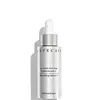What's inside
What's inside
 Key Ingredients
Key Ingredients

 Benefits
Benefits

 Concerns
Concerns

 Ingredients Side-by-side
Ingredients Side-by-side

Rosa Damascena Flower Water
MaskingWater
Skin ConditioningGlycerin
HumectantButylene Glycol
HumectantMethyl Gluceth-20
HumectantImperata Cylindrica Root Extract
Skin ConditioningDiglycerin
HumectantHydroxypropyl Methylcellulose
Emulsion StabilisingPhenoxyethanol
PreservativePullulan
Xanthan Gum
EmulsifyingPlantago Lanceolata Leaf Extract
AntimicrobialEthylhexylglycerin
Skin ConditioningPPG-26-Buteth-26
Skin ConditioningPEG-40 Hydrogenated Castor Oil
EmulsifyingAcrylates/C10-30 Alkyl Acrylate Crosspolymer
Emulsion StabilisingPentylene Glycol
Skin ConditioningPorphyridium Cruentum Extract
Skin ConditioningCaprylyl Glycol
EmollientMaltodextrin
AbsorbentSodium Hydroxide
BufferingRosa Damascena Flower Oil
MaskingPelargonium Graveolens Oil
MaskingCitric Acid
BufferingTheobroma Cacao Seed Extract
AntioxidantPsilanthus Bengalensis Leaf Cell Culture Extract
Skin ConditioningSodium Hyaluronate
HumectantCarbomer
Emulsion StabilisingAcetyl Hexapeptide-8
HumectantCamellia Sinensis Leaf Extract
AntimicrobialRubus Idaeus Leaf Cell Culture
Skin ConditioningNicotiana Sylvestris Leaf Cell Culture
Skin ConditioningAcetyl Hexapeptide-38
Skin ConditioningN-Prolyl Palmitoyl Tripeptide-56 Acetate
Skin ConditioningCitronellol
PerfumingGeraniol
PerfumingLinalool
PerfumingRosa Damascena Flower Water, Water, Glycerin, Butylene Glycol, Methyl Gluceth-20, Imperata Cylindrica Root Extract, Diglycerin, Hydroxypropyl Methylcellulose, Phenoxyethanol, Pullulan, Xanthan Gum, Plantago Lanceolata Leaf Extract, Ethylhexylglycerin, PPG-26-Buteth-26, PEG-40 Hydrogenated Castor Oil, Acrylates/C10-30 Alkyl Acrylate Crosspolymer, Pentylene Glycol, Porphyridium Cruentum Extract, Caprylyl Glycol, Maltodextrin, Sodium Hydroxide, Rosa Damascena Flower Oil, Pelargonium Graveolens Oil, Citric Acid, Theobroma Cacao Seed Extract, Psilanthus Bengalensis Leaf Cell Culture Extract, Sodium Hyaluronate, Carbomer, Acetyl Hexapeptide-8, Camellia Sinensis Leaf Extract, Rubus Idaeus Leaf Cell Culture, Nicotiana Sylvestris Leaf Cell Culture, Acetyl Hexapeptide-38, N-Prolyl Palmitoyl Tripeptide-56 Acetate, Citronellol, Geraniol, Linalool
Water
Skin ConditioningButylene Glycol
HumectantPropylene Glycol
HumectantPhenoxyethanol
PreservativeXanthan Gum
EmulsifyingCarnosine
Skin ConditioningEthylhexylglycerin
Skin ConditioningDisodium EDTA
Carbomer
Emulsion StabilisingCitric Acid
BufferingRibes Nigrum Leaf Extract
PerfumingPassiflora Incarnata Flower Extract
Skin ConditioningVitis Vinifera Leaf Extract
Skin ConditioningDextran
Tripeptide-1
Skin ConditioningIngredients Explained
These ingredients are found in both products.
Ingredients higher up in an ingredient list are typically present in a larger amount.
Butylene Glycol (or BG) is used within cosmetic products for a few different reasons:
Overall, Butylene Glycol is a safe and well-rounded ingredient that works well with other ingredients.
Though this ingredient works well with most skin types, some people with sensitive skin may experience a reaction such as allergic rashes, closed comedones, or itchiness.
Learn more about Butylene GlycolCarbomer is a polymer of acrylic acid. Its main role is to create a gel consistency.
A high amount of carbomer can cause pilling or balling up of products. Don't worry, most products contain 1% or less of carbomer.
Citric Acid is an alpha hydroxy acid (AHA) naturally found in citrus fruits like oranges, lemons, and limes.
Like other AHAs, citric acid can exfoliate skin by breaking down the bonds that hold dead skin cells together. This helps reveal smoother and brighter skin underneath.
However, this exfoliating effect only happens at high concentrations (20%) which can be hard to find in cosmetic products.
Due to this, citric acid is usually included in small amounts as a pH adjuster. This helps keep products slightly more acidic and compatible with skin's natural pH.
In skincare formulas, citric acid can:
While it can provide some skin benefits, research shows lactic acid and glycolic acid are generally more effective and less irritating exfoliants.
Most citric acid used in skincare today is made by fermenting sugars (usually from molasses). This synthetic version is identical to the natural citrus form but easier to stabilize and use in formulations.
Read more about some other popular AHA's here:
Learn more about Citric AcidEthylhexylglycerin (we can't pronounce this either) is commonly used as a preservative and skin softener. It is derived from glyceryl.
You might see Ethylhexylglycerin often paired with other preservatives such as phenoxyethanol. Ethylhexylglycerin has been found to increase the effectiveness of these other preservatives.
Phenoxyethanol is a preservative that has germicide, antimicrobial, and aromatic properties. Studies show that phenoxyethanol can prevent microbial growth. By itself, it has a scent that is similar to that of a rose.
It's often used in formulations along with Caprylyl Glycol to preserve the shelf life of products.
Water. It's the most common cosmetic ingredient of all. You'll usually see it at the top of ingredient lists, meaning that it makes up the largest part of the product.
So why is it so popular? Water most often acts as a solvent - this means that it helps dissolve other ingredients into the formulation.
You'll also recognize water as that liquid we all need to stay alive. If you see this, drink a glass of water. Stay hydrated!
Learn more about WaterXanthan gum is used as a stabilizer and thickener within cosmetic products. It helps give products a sticky, thick feeling - preventing them from being too runny.
On the technical side of things, xanthan gum is a polysaccharide - a combination consisting of multiple sugar molecules bonded together.
Xanthan gum is a pretty common and great ingredient. It is a natural, non-toxic, non-irritating ingredient that is also commonly used in food products.
Learn more about Xanthan Gum